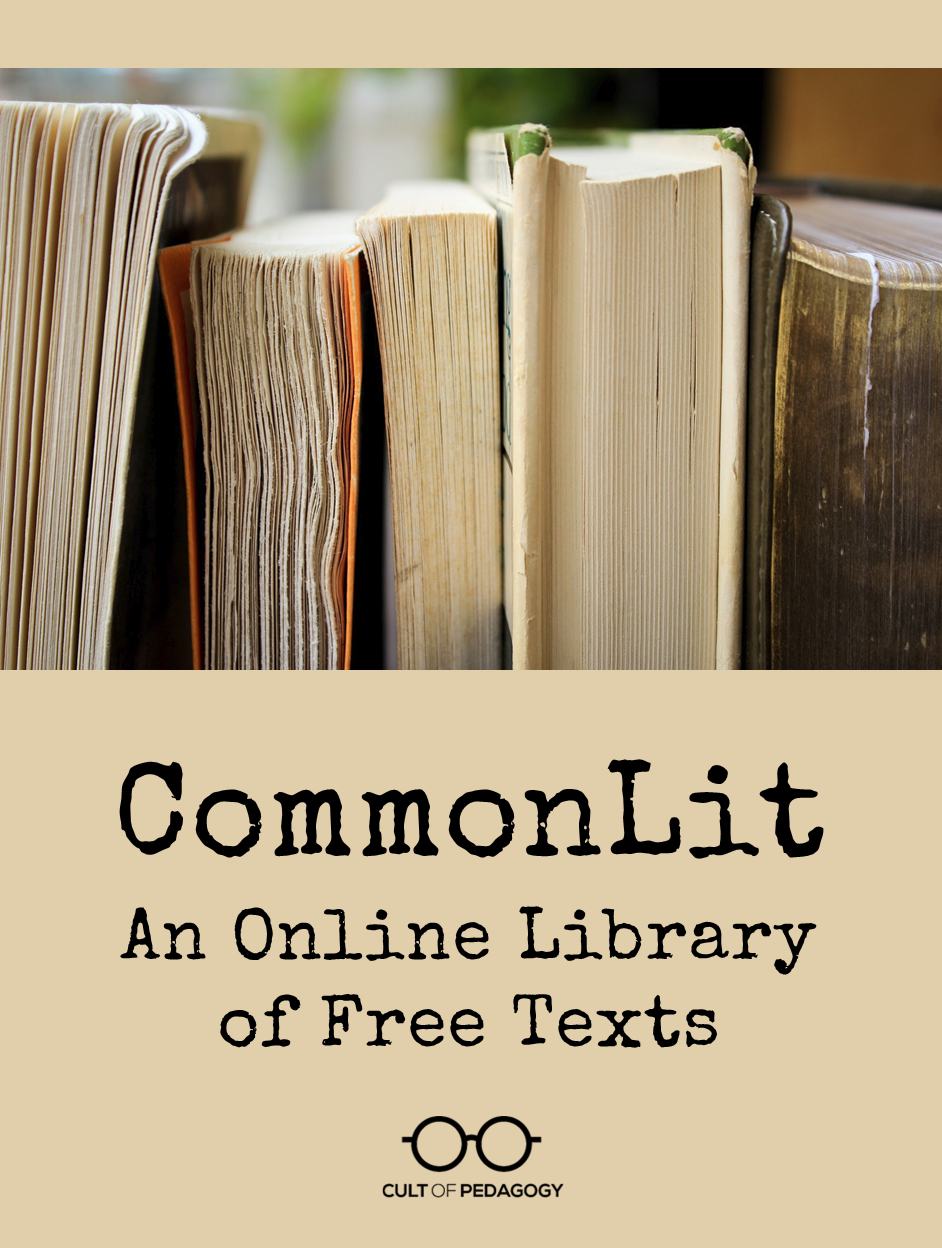
Listen to my interview with CommonLit founder Michelle Brown (transcript):
We want our students to be able to read challenging texts. That’s a given. We want them to learn to analyze, paraphrase, and infer. We want them to support their points with textual evidence. And we have a pretty good idea of how to teach them to do these things.
The only catch is finding the right texts. To truly develop our students’ skills, we need to have them read a variety of well-written, challenging materials. Whole books are an option, but they don’t always lend themselves to the focused practice students need to tackle texts just at the edge of their cognitive reach. For that kind of study, many teachers prefer shorter pieces, and finding these is no easy task.
That’s where CommonLit comes in. An online library of free literary and informational texts, CommonLit helps teachers quickly locate leveled texts that fit into a lesson or unit, assess student understanding, generate discussion, and even pair the texts with other media, all in one free platform. It’s an ideal tool for grades 5-12 but would also work for advanced students in the lower grades. (Update, January 2018: CommonLit now has over 60 reading passages for grades 3-4. See them here.)
Let’s take a closer look at CommonLit.
A Library of Literary and Informational Texts
When looking for a text on CommonLit, you’ll start by browsing the Library. The site offers a number of different ways to search for just the right text: You can look by grade level (spanning grades 5 through 12), by genre (with categories as specific as magical realism, interview, and primary source document), by Common Core reading standard, by literary device (such as alliteration, imagery, and hyperbole), or by theme. Multiple categories can be selected to help you really zero in on exactly what you need. Here’s a peek at some of the theme collections:
Suppose we choose the theme “Resilience.” Once we select it, we can narrow the theme down to a sub-theme, then narrow our search again by grade level. Here are the current options in the grade 9-10 group under Resilience:
CommonLit’s library of high-quality writing comes from a variety of sources:
- classic works that are now in the public domain, like the piece by Frederick Douglass
- professional writing contributed from other publications, like the Psychology Today piece examining Bethany Hamilton’s experience after a shark attack
- short works donated by writers like Margaret Atwood, Naomi Shihab Nye, and Gary Soto (part of other thematic collections)
Helpful Features
Once you have chosen a text, you can make the most of it by using all the robust features CommonLit provides.
Readability Features
The site offers a choice of font sizes and numbered paragraphs for easy navigation.
Footnotes and Glossary
Numbers embedded within the text are linked to pop-ups that define key vocabulary terms and provide background information on concepts students may not be familiar with.
Summary
Each text is introduced by a brief summary that gives a bit of information about the author and the text, then suggests an area students may want to focus on while they read.
Text-Dependent Questions
A set of text-dependent questions and discussion questions (top right) is included for every text.
A sample text page. (Click image for larger view.)
Paired Texts
For every text, you will also find a section where the CommonLit staff has hand-selected other texts in the library that would make good pairings. The rationale behind each pairing is carefully explained: Sometimes two texts are paired for a common theme, other times they are linked because they use a similar literary device.
Related Media
In this section, video and audio clips have been thoughtfully chosen to enrich student understanding of the ideas in the text. With the addition of this section, CommonLit has provided everything you need to give your students a full multimedia experience that spans generations and genres.
Paired Texts are chosen for every reading passage. (Click image for larger view.)
Parent Guides
CommonLit provides a parent guide for every text, allowing teachers to share what students are reading with parents. The guide also suggests ways parents can support the learning at home.
New: Student Accounts and Progress Tracking
This month, CommonLit has introduced its newest feature, which allows teachers to create classes with student accounts, then track student progress on the text-based questions.
A Look Inside
Here’s an overview of how all these features work together:
Try it Yourself
The more I dig into CommonLit, the better it gets. And it’s going to keep improving: CEO Michelle Brown says they add an average of 10 new titles every day, so be sure to check back for more.
With a resource like CommonLit in every teacher’s back pocket, we no longer have to waste hours looking for the right text. Now we, and our students, can spend those hours simply enjoying some great reads. ♦
If you like what you see on CommonLit, be sure to also check out their Pinterest boards where they collect resources to support teachers’ work with texts.
Update, May 2017: CommonLit has recently added the “Browse by Book” feature which allows teachers to browse its entire digital library of supplemental reading passages by 50 related, commonly taught book titles. For each book, CommonLit recommends 5-12 hand-picked text pairings along with suggestions for when and how to integrate them in a book unit. This new feature makes it easier for teachers to use research-based best practices: helping students to build context and make connections across texts.
Update, June 2021: CommonLit just released CommonLit 360 a free, comprehensive English Language Arts curriculum for grades 6-10. It covers a full year’s worth of instruction, with ready-to-use lessons in reading, writing, grammar, vocabulary, and more. The curriculum features brand-new digitally interactive lessons assignable directly through the CommonLit site. CommonLit 360 is available now for free to any teacher with a CommonLit account. Learn more here.
Join my mailing list and get weekly tips, tools, and inspiration all geared toward making your teaching more effective and fun. You’ll also get access to my members-only library of free resources, including my e-booklet, 20 Ways to Cut Your Grading Time in Half, which has helped thousands of teachers spend less time grading!


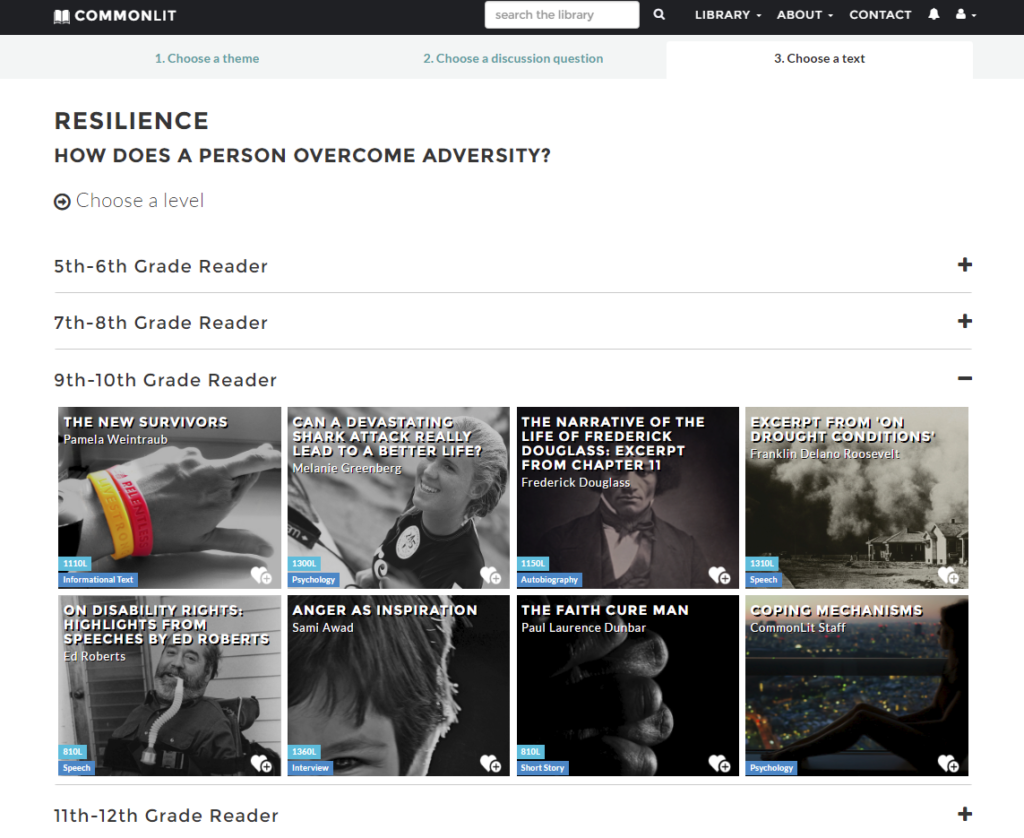
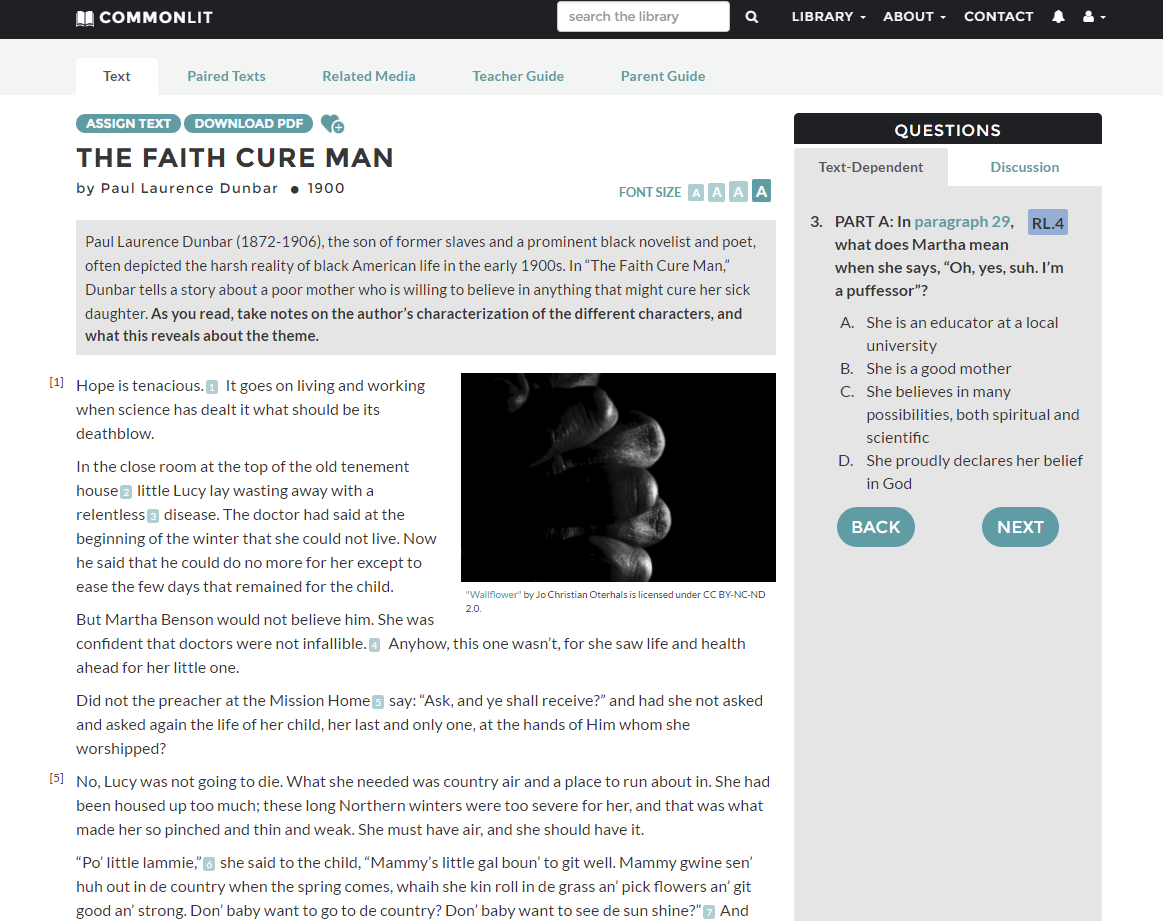
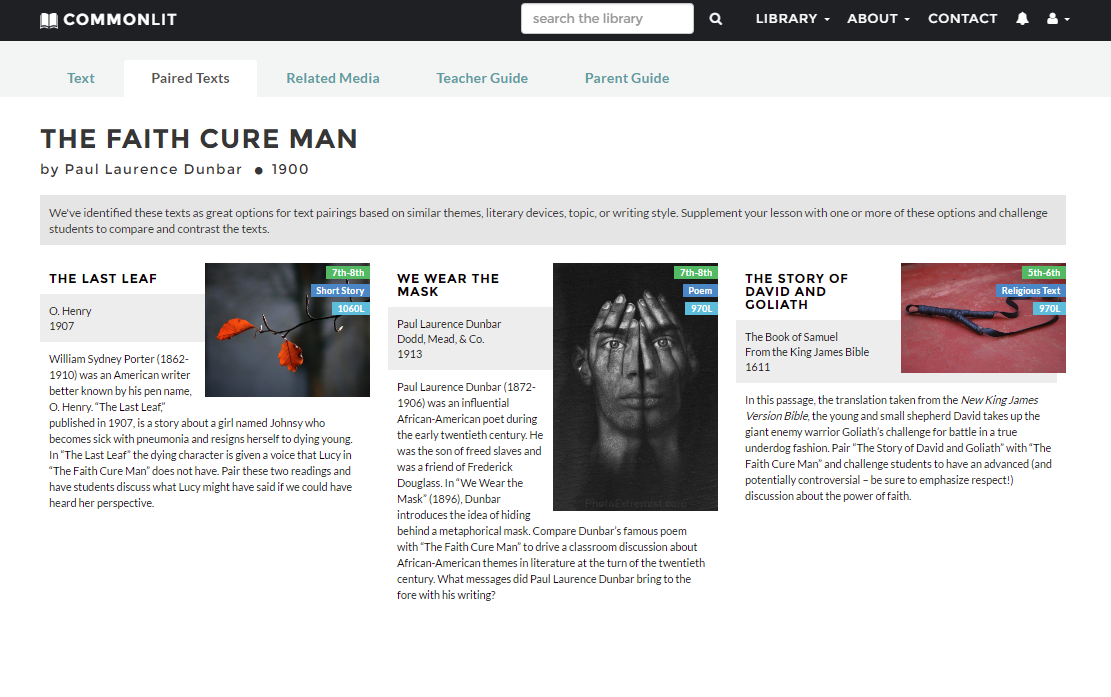



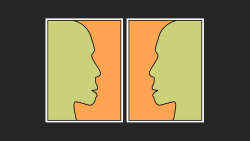
Hi Jen–this looks like a great site fir literature/language arts. Do you know of anything similar for science subjects? My district has rolled out a literacy initiative and all subject teachers are required to increase the amounts of reading and writing we do in class. Reading scientific texts uses some different skills than literary texts.
Hi Donna – I just experimented with the search filter for science and was able to find some interesting reads. I agree reading lit is a bit different than the sci texts. I’ve used Jen’s Text Structures in my science classes with great success. Also, to support math and science, my students have done well using standard reading comp strategies. Have a great year! And Jen, thanks for another wonderful resource!
Hello to both of you! The staff at CommonLit is committed to growing their collection. If you use their contact form to let them know you’d like to see more science content, I’m sure they’d take note of that.
Donna Grecia, I went with the theme man vs nature. It is full of great texts that can lead to higher order questioning and assignments. I teach hs biology and plan to use Commonlit this spring.
Thanks for the review, Jennifer. I wasn’t aware of all the useful filtering features on Common Lit. Definitely trying it this week.
A tool like this is so useful for literacy teachers, because we’ve got to be so intentional about the shared reading experiences our students have. For me, that’s the only way to balance building their independent reading lives while also building their reading skills.
A tool like this makes that pinpoint focus of finding the right text a little easier. Thanks again!
Thank you for another great resource that I can share with my teachers. Because we need our reading to be intentional and standards based, this is a wonderful resource to help us show intention for our Student Improvement Plans.
It looks like a great source for informational text to use in English class, texts that can support other subject areas.
This is fantastic! I have just become my district’s asst. Director of digital learning and after I explore this a little, I will be sharing it with everyone! It sounds fantastic for a free resource!
This looks like a fantastic site for practice, but do you know of any other free sites that would have mini lessons to pair with the passages and questions? I’m an online teacher, so mini lessons would be helpful to present before assigning the passages. I have access to Study Island, but I’m not too thrilled with the mini lessons.
This website feels like a diamond in the rough! I see that they have recently added 3rd-4th grades. I’m a K-2 literacy coach and was wondering if you knew of any similar resources for lower grades? I will take your recommendation above and leave CommonLit feedback in the meantime.
Thank you for all that you do!
Hi Julia, if you’re not already familiar with Unite for Literacy, I’d definitely check it out. Many of the books work well across curriculum and the site offers many options for differentiation. See what you think!